The Art Heart of Hong Kong: 15 Painters You Should Know
- 1. Wucius Wong (1936)
- 2. Lui Shou-Kwan (1919-1975)
- 3. Cheung Yee (1936)
- 4. Luis Chan (1905-1995)
- 5. Gaylord Chan (1925-2020)
- 6. Lam Tung Pang (1978)
- 7. Ho Sin Tung (1986)
- 8. Chu Hing Wah (1935)
- 9. Fang Zhaoling (1914-2006)
- 10. Wilson Shieh (1970)
- 11. Pang Jiun (1936)
- 12. Fung Ming Chip (1951)
- 13. Tsang Tsou Choi (1921-2007)
- 14. Firenze Lai (1984)
- 15. Au Hoi Lam (1978)
Chinese culture boasts a rich tapestry of art that spans thousands of years, encompassing a wide range of styles and mediums that reflect the country's complex history and diverse philosophies. But what makes Chinese art so unique and enduring? At the heart of Chinese art are the traditional forms of ink painting and calligraphy, practices deeply rooted in spiritual and philosophical principles. The fluidity and grace of brushwork in both painting and calligraphy are considered reflections of the artist's character and soul. Isn't it fascinating how a single brushstroke can convey so much emotion and meaning? Historically, Chinese art has evolved through various dynasties, each contributing new techniques, styles, and subjects to the rich mosaic of Chinese art. From the intricate bronze work of the Shang Dynasty to the serene landscape paintings of the Song Dynasty, each period has left an indelible mark on the evolution of Chinese aesthetics.
But what about the role of Hong Kong in the Chinese art world? Hong Kong has emerged as a vibrant hub for contemporary art, bridging the East and West. Its dynamic art scene provides a platform for both traditional Chinese art forms and groundbreaking contemporary works, showcasing the city's unique position as a cultural crossroads. The city's numerous galleries, exhibitions, and art fairs play a crucial role in promoting Chinese artists on the international stage, making it an integral part of the global art landscape. What will the next chapter in Chinese art bring? Only time will tell, but one thing is for sure – it will be extraordinary! Thus, we are going to review 15 notable artists who have had a big impact on Chinese artistic history!
1. Wucius Wong (1936)

Wucius Wong Seclusion 1975
Born in Guangdong in 1936 and later moving to Hong Kong, Wong's artistry is a bridge between the ancient and the modern, reflecting a deep understanding of both Eastern and Western aesthetic principles. One of Wong's most famous works, "The Rhythmic Landscape," exemplifies his signature style, where traditional Chinese ink landscapes are reimagined through the lens of geometric abstraction. This piece is a testament to his ability to harmonize the fluidity of ink with the precision of geometric forms, creating landscapes that are both familiar and fantastical. Another notable work, "Metamorphosis of the Dragon," showcases Wong's skillful integration of cultural symbolism with abstract art. The dragon, a potent symbol in Chinese culture, is deconstructed and reassembled in an abstract composition that captivates viewers with its dynamic movement and intricate patterns. His artworks predominantly depict landscapes and natural elements, reinterpreted through a unique blend of traditional Chinese ink painting techniques and Western abstract geometrical forms, exploring the harmony between nature, culture, and art.
2. Lui Shou-Kwan (1919-1975)
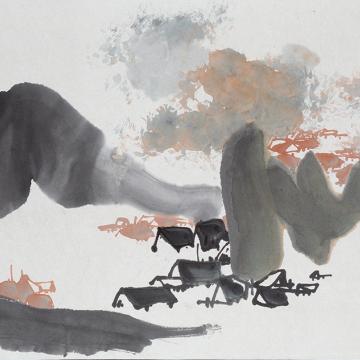
Lui Shou-kwan "Zen Painting"
Reknowned in the Hong Kong art scene as the pioneer of the avant-garde New Ink Movement, Lui Shou-Kwan deserves special recognition. This movement transformed traditional Chinese ink painting by incorporating elements of modernist abstraction. Lui's passion for painting was ignited by his father, Lui Canming (1892-1963). After obtaining his Economics degree from Guangzhou University, Lui moved to Hong Kong. It was during his time on the pier that Lui became deeply inspired by the scenic beauty of Hong Kong’s mountainous landscapes and its bustling harbor, which later became a recurring theme in his semi-abstract landscape works.
"Zen Painting," one of Lui's most acclaimed creations, perfectly captures his philosophical approach to art, drawing heavily on Zen Buddhism to explore the sublime beauty of the natural world and the cosmos. Another significant work, "Mountains in Fog," showcases Lui's exceptional ability to use ink and brush to convey the fleeting and mystical essence of landscapes, effectively merging the physical with the spiritual realm in his art.
3. Cheung Yee (1936)
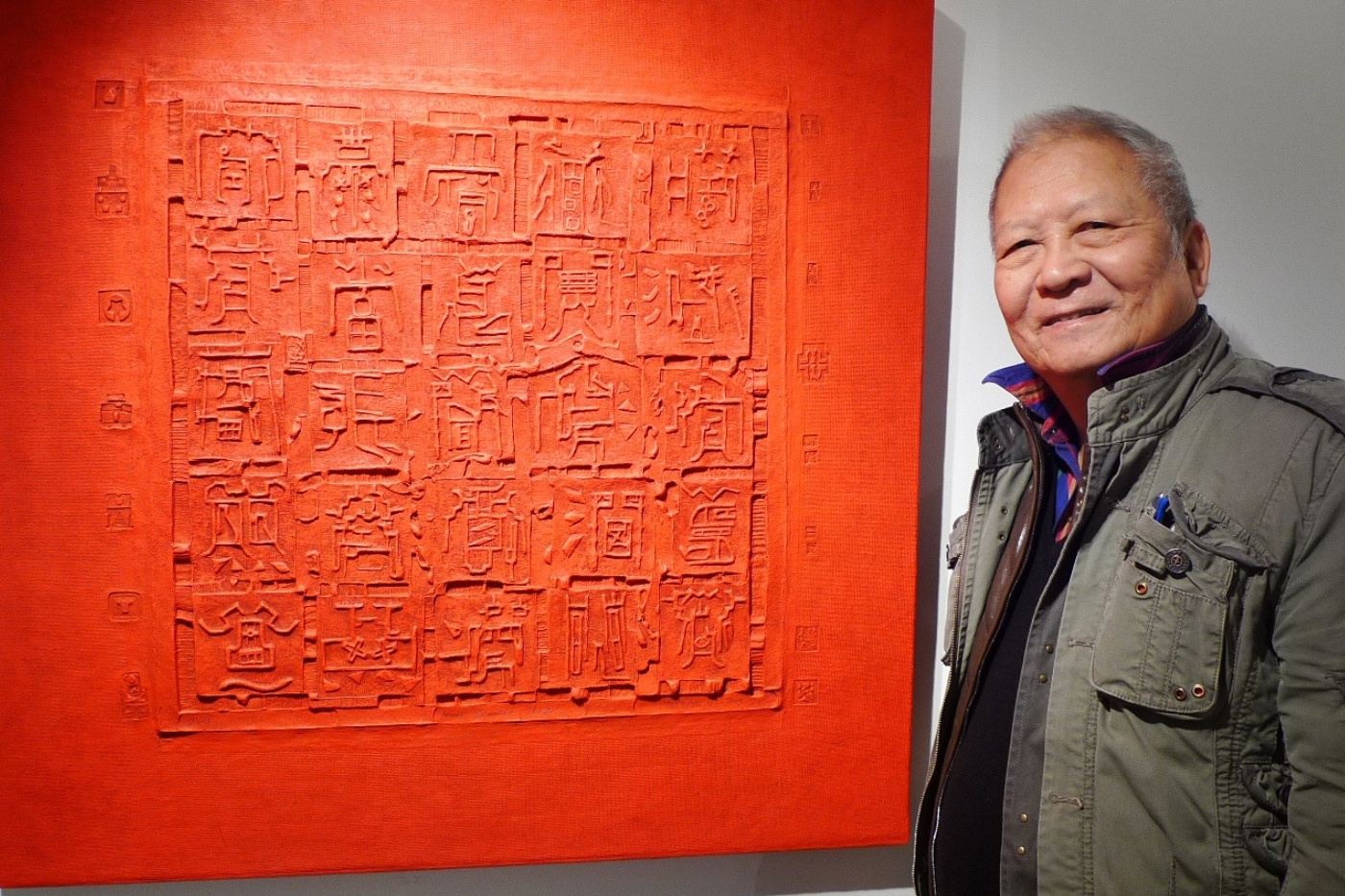
Cheung Yee
Cheung Yee, an acclaimed artist from Hong Kong, is celebrated for his innovative contributions to sculpture and painting. In 1963, he played a pivotal role in establishing the avant-garde Circle Art Group, anchoring the abstract art firmly within Chinese cultural traditions. Cheung also harbored a passion for stone carving, further diversifying his artistic repertoire. His artworks from the 1990s delve into metaphysical explorations, notably through the depiction of the Xuanwu (the North God, depicted as a tortoise and snake amalgam), and compositions inspired by the ancient Hetu and Luoshu magic squares, as well as imagery from the four spirits and eight trigrams. The "Copper Series," one of Cheung's hallmark collections, demonstrates his creative material use and profound respect for Chinese mythology, blending homage to ancient practices with a modern twist that engages contemporary viewers while honoring heritage. Beyond his renowned sculptures and paintings, Cheung has significantly impacted printmaking. His art, celebrated on an international scale, has brought him recognition well outside the confines of Hong Kong.
4. Luis Chan (1905-1995)

Luis Chan
Luis Chan, affectionately known as the "Picasso of Hong Kong," was a seminal figure in the city's art landscape, celebrated for his whimsical and imaginative works. Born in Panama in 1905 but moving to Hong Kong at a young age, Chan's artistic journey spanned over six decades, during which he evolved from a traditional Chinese painter to a master of fantasy and surreal landscapes. Chan's early works were deeply rooted in the meticulous styles of Chinese landscape painting, showcasing his profound skill and adherence to classical techniques. Namely, he used techniques of English landscape watercolor painting. However, as his career progressed, his style underwent a dramatic transformation, marked by a bold embrace of color, fantastical themes, and a playful reinterpretation of reality. This shift reflected Chan's unique vision and his desire to explore the boundaries of imagination and expressiveness. One of his most iconic series, "Fantasy Landscapes," captures this transition beautifully, presenting viewers with a kaleidoscopic world where the whimsical and the bizarre coexist in harmony. His ability to blend Eastern and Western artistic traditions, combined with his inexhaustible imagination, has made Luis Chan a beloved figure in the world of art.
5. Gaylord Chan (1925-2020)
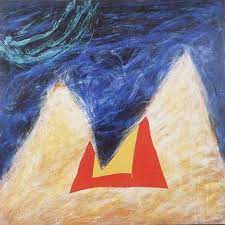
Gaylord Chan
Gaylord Chan was a prominent Hong Kong artist known for his innovative contributions to the city's contemporary art scene. Born in Hong Kong, Chan embarked on his artistic journey relatively late in life, beginning his formal art education in his 40s. Despite this late start, he quickly established himself as a significant figure in the art world. Chan's work is characterized by its vibrant use of color and dynamic compositions, often exploring themes of nature and urban life. His artistic versatility is evident in his use of various media, including painting, sculpture, and printmaking, making him a multifaceted contributor to the arts. One of Chan's famous works is "Neon Lights," a series that captures the pulsating energy and vivid colors of Hong Kong's cityscape at night. This series reflects Chan's fascination with the urban environment and his ability to translate the complexity of city life into compelling abstract compositions. In order to test out different approaches to art education, Chan founded Culture Corner Art Academy in 1989 and has been a founding member of the Visual Arts Society since 1974.
6. Lam Tung Pang (1978)

Lam Tung Pang "The Curiosity Box"
Lam Tung Pang is renowned for his multidisciplinary approach to painting, which combines conventional methods with modern subjects. He was also a pioneer of the Fotanian art movement in Hong Kong. Educated at the Central Saint Martins College of Art and Design in London, Pang has established a reputation for his thought-provoking works. Pang works across various media, including painting, installation, and video, to explore complex issues such as urbanization, nature, history, and the impacts of globalization. "The Curiosity Box," an installation that allows visitors to look into a number of tiny, elaborate settings housed within boxes, is one of his most well-known creations. This work plays on the theme of curiosity and the desire to explore unseen worlds, drawing on the tradition of Chinese scholar's rocks and miniature landscapes while incorporating modern elements and perspectives. Through "The Curiosity Box" and other works, Lam Tung Pang invites viewers to reconsider their relationship with their surroundings, blending traditional aesthetics with contemporary questions to create a unique and engaging body of work.
7. Ho Sin Tung (1986)
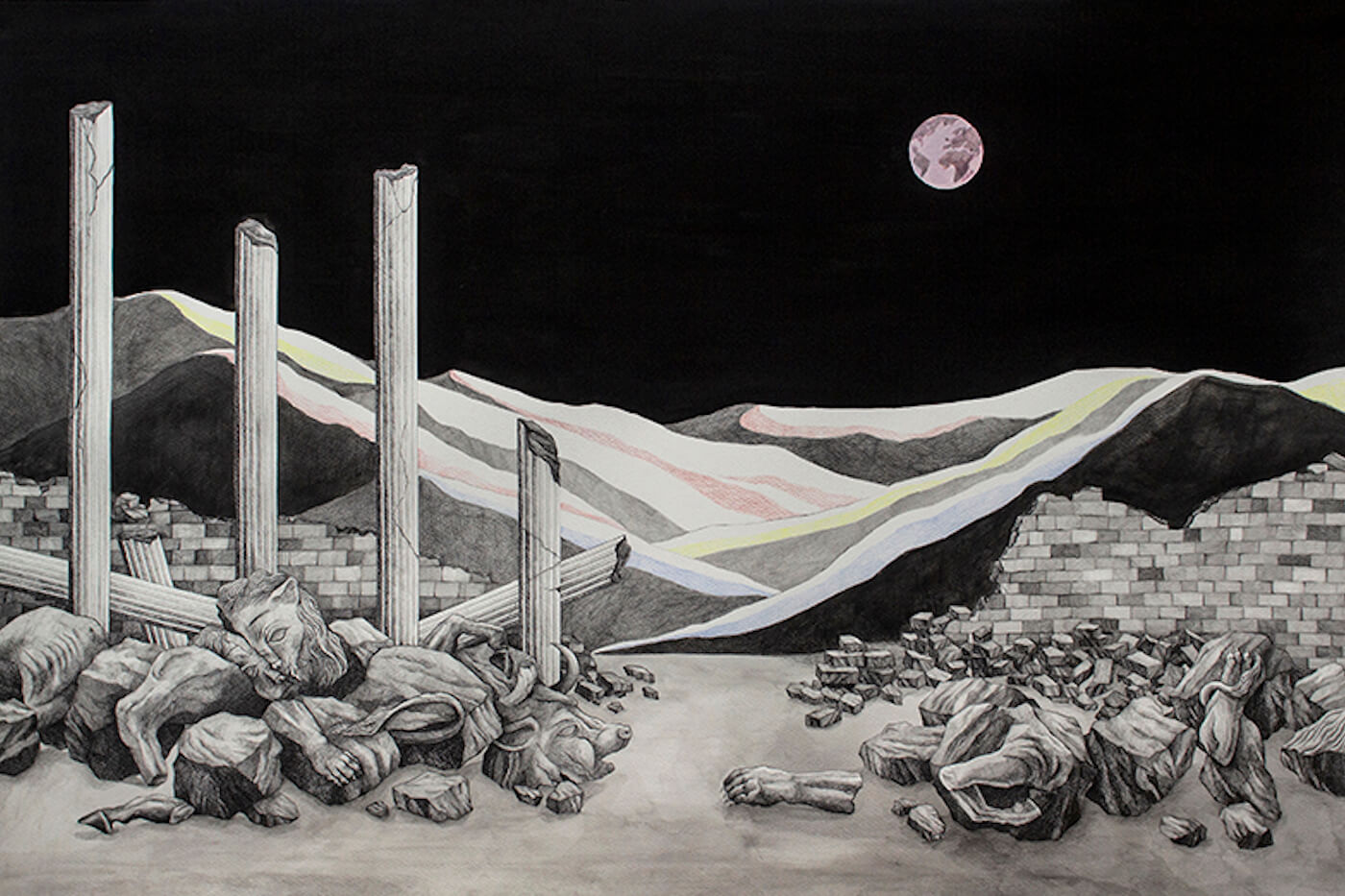
Ho Sin Tung - Swampland
Ho Sin Tung's work is primarily centered around drawing, but she also incorporates a variety of media including video, installation, and text. Her art is deeply introspective, often reflecting her personal interests in cinema, literature, and history, as well as her observations of society. What makes Ho Sin Tung's art particularly interesting? It is her ability to blend a quirky, whimsical aesthetic with profound thematic depth. Her drawings, characterized by their delicate, detailed, and somewhat nostalgic quality, frequently incorporate references to pop culture, literary works, and historical events. Ho's works often evoke a sense of melancholy and introspection. For example, her series of works related to cinema, where she creates intricate drawings and installations that reference specific films, explores the idea of memory and how it is influenced by cinematic experiences. These pieces are not just tributes to the films they reference but are also meditations on the nature of memory, loss, and longing... Another intriguing aspect of Ho's art is her use of unconventional materials and surfaces, such as vintage paper, book covers, and found objects, which adds layers of meaning and texture to her work.
8. Chu Hing Wah (1935)
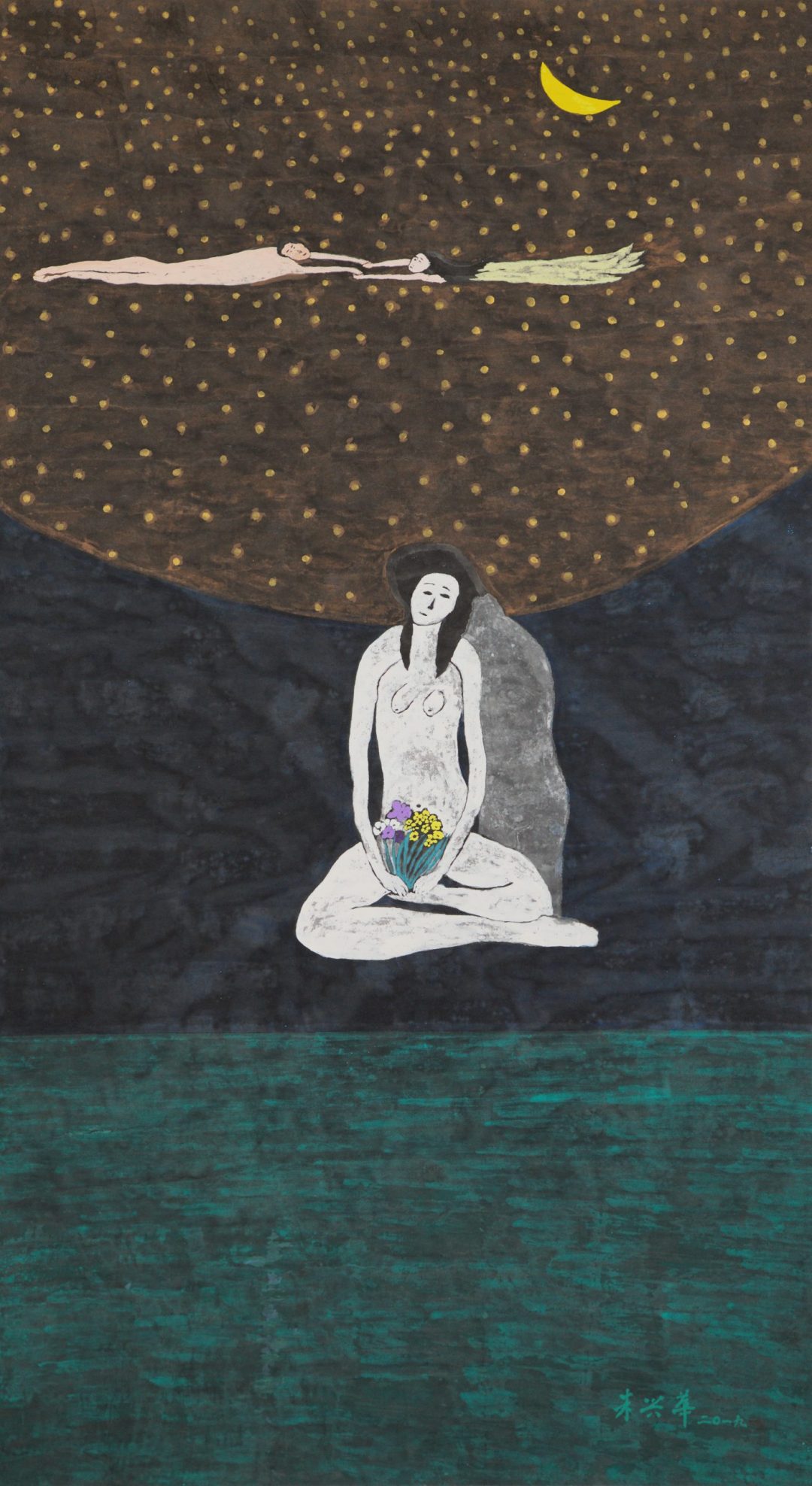
Chu Hing Wah "Dream of a dream" 2019
Chu Hing Wah is a Hong Kong painter celebrated for his vivid depictions of city life and rural landscapes. Migrating to Hong Kong at the age of 13, Chu's artistic journey began amidst the bustling streets and evolving urban landscape of the city, deeply influencing his thematic focus and aesthetic approach. Initially pursuing a career in nursing, Chu balanced his professional duties with his passion for painting. Hing Wah applies Chinese ink and colors using a layering and diffusing process. One of Chu Hing Wah's popular works, "Children Playing in the Street," captures the simple joys and innocence of childhood against the backdrop of Hong Kong's bustling city streets. This painting is loved for its vibrant portrayal of everyday life, bringing to the forefront the often overlooked moments of happiness and play amidst urban hustle. "Lion Rock" is another exemplary piece by Chu Hing Wah that stands out for its depiction of one of Hong Kong's iconic landmarks. This painting is not just a geographical portrayal but a symbolic representation of the spirit of the Hong Kong people—resilience, solidarity, and strength. His works of art are cherished for their capacity to arouse sentimentality, communicate intense emotional stories, and provide a glimpse into Hong Kong's spirit.
9. Fang Zhaoling (1914-2006)
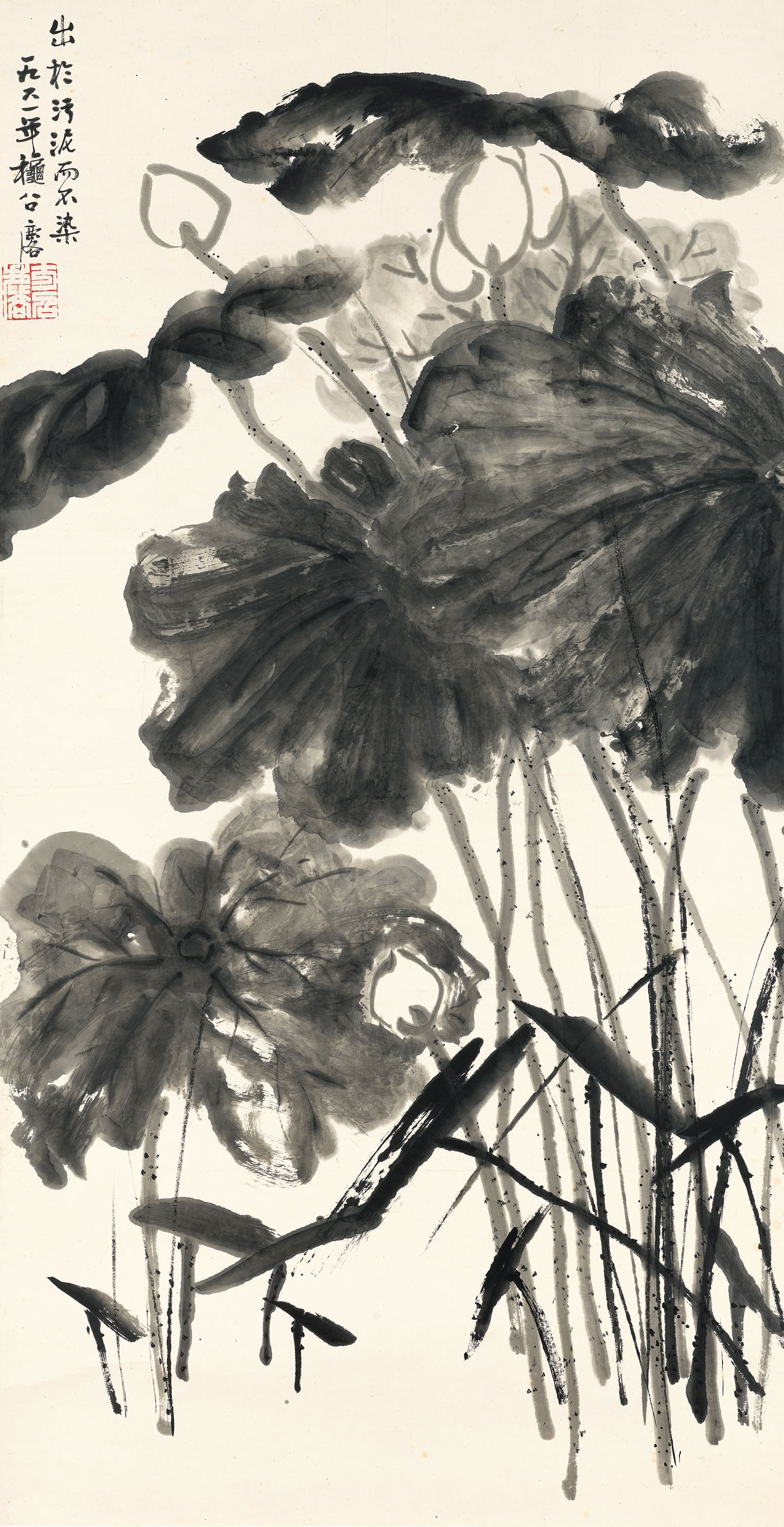
Fang Zhaoling "Ink Lotus"
Fang Zhaoling was a distinguished painter, known for her remarkable contributions to Chinese ink painting. Fang's artistic journey was shaped by personal adversity and the tumultuous times she lived through, including the Japanese invasion of China. Despite these challenges, she pursued her education fervently, studying under prominent Chinese painters such as Qian Songyan and Zhang Daqian, which significantly influenced her artistic development. Her paintings often feature landscapes, flowers, and birds, executed with a vibrant and dynamic touch that brings the subjects to life. Beyond her aesthetic achievements, Fang's art carries a deeper significance, reflecting her perspectives on the cultural and social issues of her time. "Ink Lotus" is a striking example of her mastery in combining traditional Chinese ink painting techniques with a modern aesthetic. The painting captures the ethereal beauty of lotus flowers in bloom, rendered with graceful brush strokes and a nuanced use of ink. Most of Fang Zhaoling's works, including "Boating," "Three Gorges," "Memories of Guilin," and "Boat People," vividly depict scenes of the sea, boats, people, and imposing rocks, showcasing her deep engagement with these recurring natural and cultural themes. As a widow raising eight children, her resilience and determination were mirrored in her art, making her works profoundly inspirational. Fang Zhaoling's contributions to art were not only limited to her paintings; she was also an advocate for women's education and played a significant role in promoting cultural exchange between the East and West.
10. Wilson Shieh (1970)
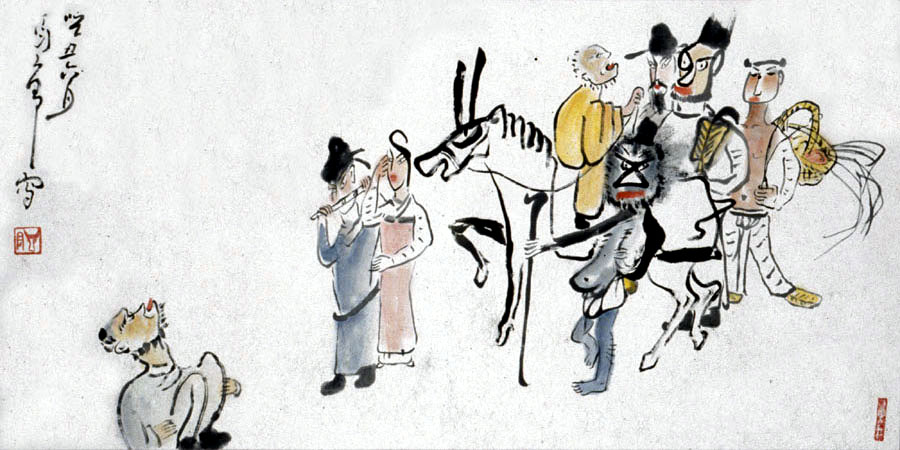
Wilson Shieh "The Eight Immortals"
Wilson Shieh is a contemporary artist renowned for his meticulous brushwork and unique reinterpretation of traditional Chinese Gongbi painting, a style characterized by its fine detail and precision. Shieh's paintings are distinguished by their whimsical yet satirical portrayal of figures, often drawn with elongated, slender forms and engaging in various activities or roles that challenge traditional societal norms and expectations. Among his notable works, "Music Family" stands out as a prime example of his talent. This painting depicts a family of musicians, each playing a different instrument, rendered in Shieh’s signature thin, detailed line style. Another significant piece, "The Eight Immortals," reimagines the legendary Taoist figures in a modern context, showcasing Shieh’s ability to fuse historical themes with contemporary issues. These paintings are celebrated for their intricate detail, cultural commentary, and the unique way they bridge historical Chinese art forms with modern-day life, making Wilson Shieh a significant figure in Hong Kong's contemporary art landscape.
11. Pang Jiun (1936)

Pang Jiun "Terrace" 2020
Pang Jiun is a highly respected Chinese painter renowned for his mastery in oil painting and traditional Chinese ink painting, making significant contributions to the development of contemporary Chinese art. Pang Jiun's artistic lineage is deeply rooted in Chinese tradition; he is the son of Pang Xunqin, a pioneer of modern Chinese art, which profoundly influenced his artistic development. His paintings often blend the meticulous brushwork and aesthetic sensibilities of traditional Chinese painting with the vibrant colors and techniques of Western oil painting. Pang Jiun is also known for his portraits. Among the best works of Pang Jiun, "Terrace," "Water Village," and "River View" stand out, masterfully conveying the atmospheric essence of China through majestic and diverse landscapes. Additionally, his collection includes a number of exquisite bouquet paintings, further showcasing his versatile talent in capturing both the grandeur of natural scenery and the delicate beauty of flowers. Thus, his subjects range from lush, vivid landscapes that evoke the beauty of the Chinese countryside to elegant floral compositions and serene still lifes.
12. Fung Ming Chip (1951)

Fung Ming Chip "Deconstructivist Calligraphy Scrolls"
Fung Ming Chip, a revolutionary figure in the world of Chinese calligraphy and painting, has significantly contributed to the evolution of traditional Chinese art forms with his innovative approach. Often combining calligraphy, painting, and poetry into a single, seamless piece of art, his work is distinguished by a thorough investigation of the relationship between written characters and their visual depiction. His pieces often feature a mix of scripts, from the ancient seal script to more contemporary styles, each carefully chosen to enhance the artwork's overall impact and meaning. Among his notable works, pieces like "Deconstructivist Calligraphy Scrolls" and "Scripting on the Fan" stand out for their innovative use of space, structure, and rhythm, challenging traditional perceptions of calligraphy as merely a form of writing. In the first one, Fung Ming Chip showcases a unique fusion of traditional Chinese calligraphy with visual art, where the calligraphic characters are transformed into the rocky outcrops of a landscape. This innovative blend of text and image challenges conventional boundaries and offers a new dimension to the interpretation of calligraphy, standing as a testament to his creative vision.
13. Tsang Tsou Choi (1921-2007)

Tsang Tsou Choi
Tsang Tsou Choi, also known as the "King of Kowloon," was a Hong Kong artist famed for his distinctive form of street art. Born in 1921, Tsang became an iconic figure in Hong Kong's cultural landscape through his unique calligraphic graffiti, which he began creating in the 1950s. His work, which often covered public spaces across Hong Kong, featured a mix of autobiographical texts, political messages, and claims of royal ancestry, all written in a bold, assertive style. Despite the fact that almost all of Tsang Tsou Choi's works are untitled, they are highly recognizable and have left a significant mark on the cultural fabric of Hong Kong. His distinctive style of calligraphy and the recurrent themes within his graffiti—most notably his claims of sovereignty over the Kowloon area—make his artworks unmistakable. Tsang's use of traditional Chinese characters, often painted in bold, black ink on public surfaces such as walls, street lamps, and utility boxes, stands out in the urban landscape of Hong Kong. While Tsang's work was once considered vandalism, over time, it has come to be viewed as an integral part of Hong Kong's cultural and artistic heritage. His graffiti, which adorned everything from lamp posts to utility boxes, often included his signature use of traditional Chinese characters. The content and style of his work were both personal and subversive, reflecting his views on colonialism, identity, and ownership.
14. Firenze Lai (1984)
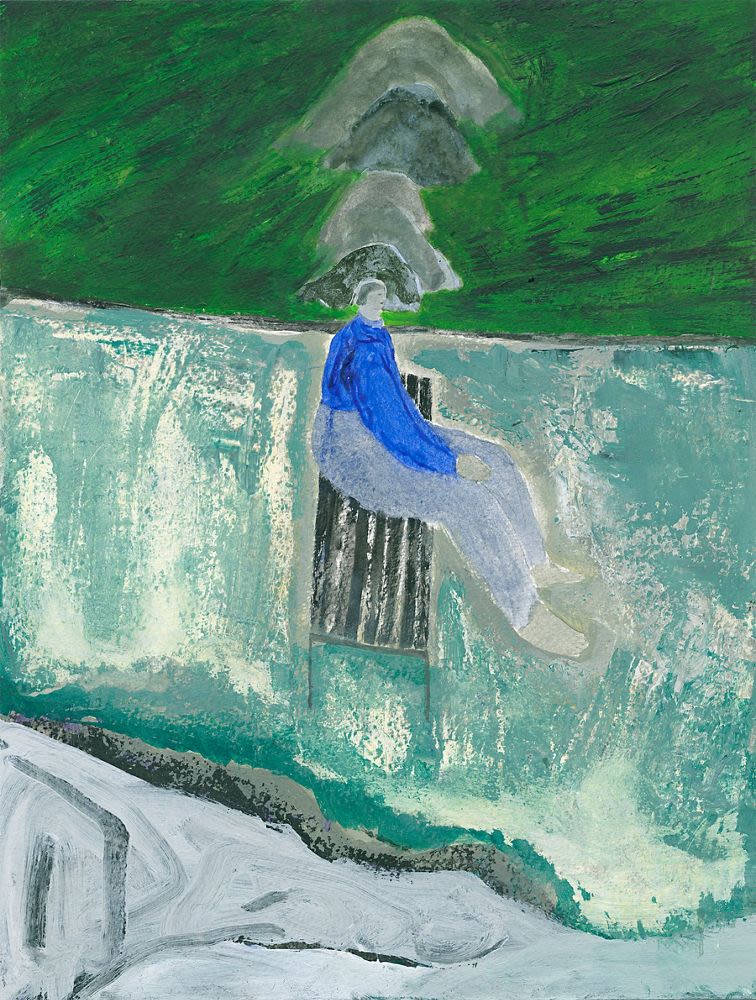
Firenze Lai "Alignment" 2012
Feeling overwhelmed by the hustle and bustle of city life? Firenze Lai's paintings, with their unique portrayal of isolation and introspection amid urban chaos, might just resonate with your experiences. Contemporary Hong Kong artist Firenze Lai is recognized for her reflective and emotive paintings that touch the nuances of human emotion, interpersonal connections, and the psychological effects of city living. Her work evokes the loneliness and introspection of urban life, with pieces like "The Visitor," "Alignment," and "Walking People" showcasing distinct proportions and perspectives that show lone figures in vast, ambiguous spaces. Her paintings invite viewers to observe and interpret the complex emotions she portrays. Her ability to convey complex emotional states through simple yet powerful visual language has earned her a prominent place in contemporary art discussions, particularly in the context of Asian urban experiences. Through her work, Firenze Lai invites viewers to reflect on their own experiences of isolation, connection, and the search for meaning in an ever-changing world.
15. Au Hoi Lam (1978)
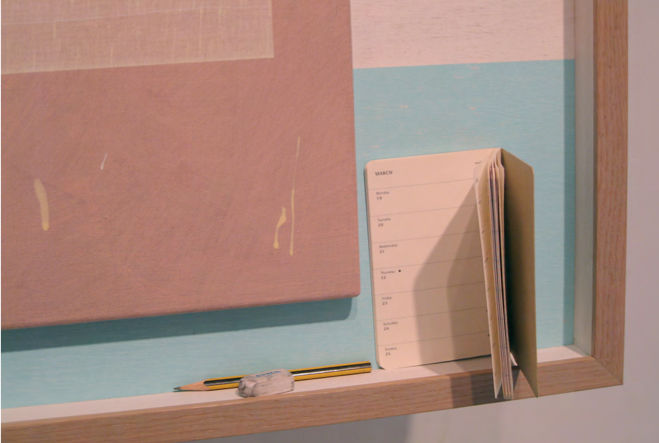
Au Hoi Lam "My Father Is Over The Ocean"
Au Hoi Lam, the last in our list, is Hong Kong-based artist known for her deeply personal and introspective art that explores themes of memory, loss, and the passage of time. Au's artistry spans a variety of mediums, including painting, drawing, and installation art, allowing her to express complex emotional states and ideas through diverse forms. One of her notable series, "My Father is Over the Ocean," showcases Au's capacity to deal with personal grief and loss. This series is a poignant exploration of her relationship with her late father, blending the deeply personal with broader reflections on mortality and remembrance. Her exhibitions often become spaces of communal reflection, where personal stories intersect with larger cultural and historical narratives, highlighting her skill in connecting the individual with the universal.
Exploring the rich and diverse world of Chinese art opens up a realm of creativity and cultural depth that is truly worth your attention, offering unique perspectives and profound insights into both traditional and contemporary expressions. If you're looking to broaden your artistic horizons and delve into the rich tapestry of global creativity, our TrendGallery website serves as a gateway to discovery!
No Comments Yet...